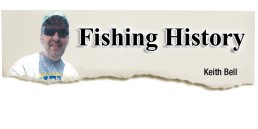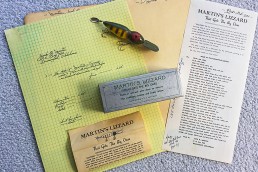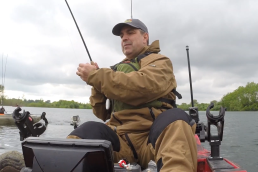The Hinckle Lizard
SHARE THIS POST
Joe and His Traveling Lizard
One of my favorite parts of collecting old fishing lures is discovering all the old designs that throughout the years. We fishermen are certainly a creative bunch. The Hinkle Lizard is one of those lures that was probably designed just as much to catch the fishermen’s eye as much as the fish’s.
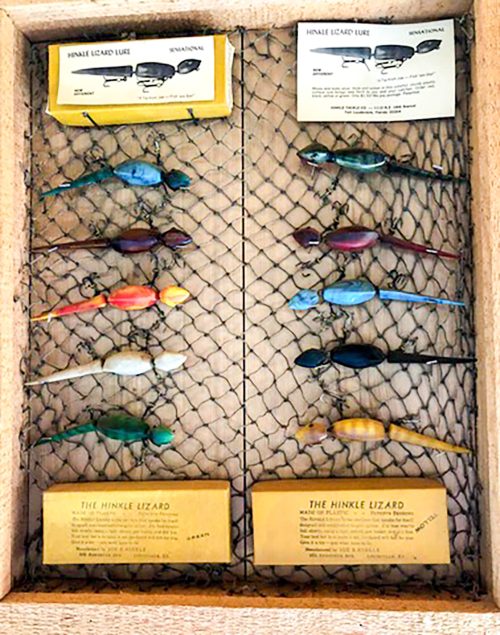
The Kentucky years
The Hinkle Lizard was created around 1949 by Joseph Hinkle out of Louisville, Kentucky. He applied for a patent in 1949 that was granted in 1952. At the time, the lure was unlike anything that fishermen had ever seen. The Hinkle Lizard is an early-plastic, jointed-lizard fishing lure that was ahead of its time in design. It is double-jointed with an offset “outrigger” hook setup on one of the sets of hooks, similar in design to a Helin Flatfish lure. Production of the Lizard began in 1949.
Originally, word-of-mouth sales helped the Hinkle Lizard sell, as Joe was known as a top local fisherman. In fact, I found Joe in one local newspaper article from 1951, which asked people to name the top three fishermen in the area. As you can see in the clipping, Joe B. Hinkle came up first in one of the lists. Formal advertising was kept to a minimum, but I was able to find a 1954 ad showing the “New…Different Hinkle Lizard Lure.” As you can see from the ad, the available colors at the time were red, black, yellow and green. The colors remained the same throughout the life of the lure. The lures came in a yellow, two-piece cardboard box and were priced at $1.00 each.
x
Are you enjoying this post?
You can be among the first to get the latest info on where to go, what to use and how to use it!
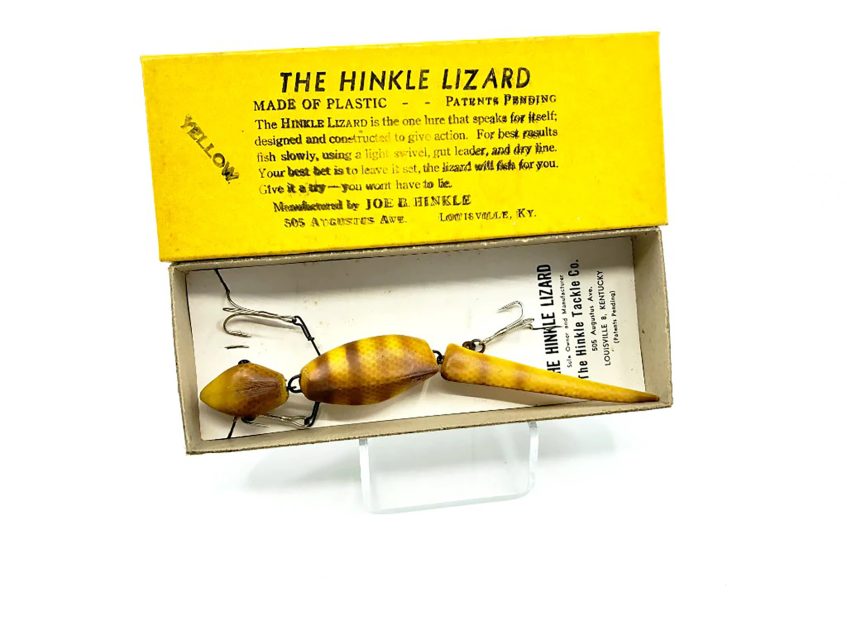
The Wisconsin years
Sometime around 1954, a couple of lure makers in Wisconsin—Elmer Deuster and August “Augie” Machtig—purchased the rights and all remaining stock of the Hinkle Lizard. Deuster and Machtig were more “famous” for their own “critter” fishing lure—The Gopher lure—a muskie lure designed to look like a struggling gopher. The addition of a Lizard to the lure lineup must have seemed like a natural expansion.
They purchased the remaining stock and molds from Hinkle. Wisconsin distribution of this bait mainly focused on assembling the several thousand bait bodies they purchased and distributing them in the same yellow boxes, but now with a Milwaukee address imprinted on the side. Note this address was the bowling alley that Deuster ran—Deuster’s Lanes in Milwaukee, Wisconsin. Once they ran out of the original yellow boxes, they began to assemble them in bags with a cardboard topping and a Sheboygan address. Red, a rarer color in a marked box, is now much more common to find in this bagged version. In an attempt to later rebrand the lure, the bagged lizard was eventually renamed and marketed as Sally the Hooker Salamander lure and marketed under D-M Lures (Deuster-Machtig Lures).
Sales never really took off, though, and they experimented with different ideas with the excess inventory. They tried to turn the Lizard into a diving bait. To do this, they included a collar around the neck joint and a diving lip. These are additions/improvements were obviously made to try to improve the action and fishability of the lure. These two changes took what was once a surface lure and allowed it to dive, while holding the first two sections together.
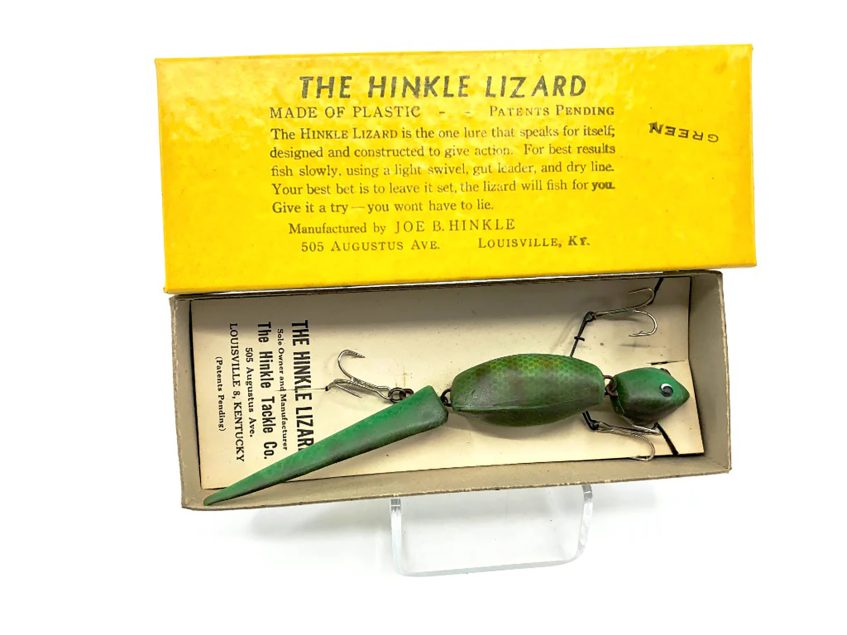
The Florida “snowbird” version
Even after the sale to Deuster-Machtig, Joe Hinkle was still somewhat involved. Hinkle was apparently a “snowbird” who wintered in Florida. He had an agreement to keep selling some of the Lizards even after the sale, as there are marketing pieces and Lizards with a Florida address and “picture” box. It is essentially a piece of their marketing material cut out and glued onto the yellow box. These are the rarest of the Hinkle Lizard boxes, by far. I can also confirm that these were found mixed in with Deuster-Machtig inventory after they shut down, so there must have been some Hinkle/Deuster-Machtig collaboration.
Eventually, Deuster and Machtig shut down their business in the early 1960s. In the late 1990s, the Gopher Bait Company was started anew and began producing the Gopher muskie lure again, but the Lizard has been left to the history books.
I had the fortune to meet with a son of a good friend of the original owners, who shared with me some of the last remaining inventory when the Lizard production was shut down in Sheboygan. They had experimented with different colors including some marbleized colors. These never saw commercialized production, but as you can see from the photo, they are beautiful examples of Hinkle’s original lures. Standard colors of Hinkle Lizards in their original boxes sell today in excellent condition for $150 to $250 each. I think Joe would be proud of what became of his Lizards all these years later.
Keith Bell and his family live in Neenah, Wisconsin but spend a lot of time fishing northern Wisconsin. Keith has been an avid angler and outdoorsman his entire life. His passion for fishing is matched only by his passion for fishing history and preservation. He is the founder and owner of MyBaitShop.com, the world’s largest online vintage tackle and history website. You can reach Keith at his website or at keith.bell@mybaitshop.com
MWO
SHARE THIS POST
You may also like...
Did you enjoy this post?
You can be among the first to get the latest info on where to go, what to use and how to use it!
